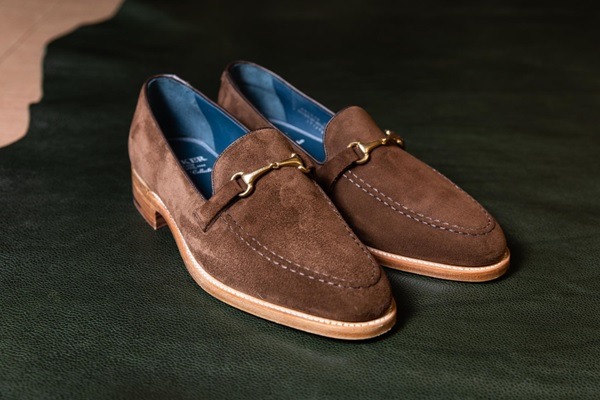Suede is known for its luxurious feel and distinctive look. With proper care, it can age gracefully and acquire a patina. However, it needs to be treated with the utmost care and respect. If you have ever owned a pair of suede shoes, you surely would have looked up how to clean suede shoes properly. What are the benefits of buying items in suede and do they outweigh the disadvantages?
How Suede is Made
The name suede originates from the French phrase ‘gants de Suède’ which means ‘gloves of Sweden’. During the Romantic area, the French aristocracy fell in love with the exceptionally soft gloves crafted in Sweden. While gloves were the only thing made from suede for decades, craftspeople eventually realized that the potential for suede went far beyond gloves.
Suede can be made from several different natural skins but it is most commonly made from the hide of lambs. After the hide is dried completely, it is treated with a chemical called lime to eliminate the hair follicles. Then, the hide is treated with a natural enzyme called tannin in a process referred to as ‘tanning’ to prevent it from decomposing over time.
Next, the leather is first treated with a special solution to strengthen it. Some manufacturers add synthetic compounds to make the leather water resistant and easier to maintain. The hard, topmost layer is trimmed from the leather to leave a thin material that feels soft and drapes well. This trimming process also helps to ensure that the shape of the fibers is consistent.
Lastly, the leather is dyed to the desired color and pressed to create the desired shape. Then, the material is pressed and dried again before it is ready for use. This complicated production process allows the final suede product to have a soft and luxurious feel. This is referred to as the ‘nap’ of suede—the velvety texture that occurs due to the fine fiber strands.
The Benefits of Suede
Suede is durable. Although suede is not as durable as its leather cousin, it is still a treated natural hide. This means that it is considerably more hard-wearing than many other types of synthetic fabrics such as polyester. As a result, it is an excellent material for items that get a lot of use.
It is breathable. Another benefit of suede is that it is thin and porous. This allows air to circulate through the fabric when worn. This makes it more comfortable and cooler to wear in the summer than other leather materials, which are often thick and heavy.
It is extremely soft. A key feature of suede is how well it drapes. Compared to leather, suede is much softer and more comfortable to wear. This makes it an excellent fabric choice for items that will be regularly in contact with the skin, such as gloves, jackets, and shoes.
It can be dyed into a variety of colors. Suede can be dyed in a wide range of different colors to suit the designer’s needs. This means that it can be used in a variety of looks from rustic cowboy to high fashion. Elvis Presley even wrote a song about his pair of blue suede shoes!
It has a distinctive look. Suede manages to look both elegant and casual at the same time. No material can replicate the unique look and feel of suede and it imparts a certain element of class. Hence, quality suede is usually associated with expensive designer clothing.
The Disadvantages of Suede
Suede is less tough than leather. The softness and thinness of suede are its strengths and also its flaws. Although suede is not as frail as cotton, it is not as resilient as traditional leather. Therefore, it is more susceptible to damage from rough wear-and-tear or sharp objects.
It can get dirty easily. Dirt and moisture can easily become trapped in the nap. This can stain and further deteriorate the quality of the fabric. You can clean your suede items with a damp cloth after each outing, but it is best to avoid situations where they are exposed to the elements. Hence, suede is best reserved for indoor conditions.
It can vary in quality. What is labeled as suede can vary widely in quality. Some suede is mass-produced in subpar factory conditions and designed for the lower end of the market. The quality of suede can usually be discerned by touch. A low-quality suede will feel thick and rough while a high-quality one will be smooth and delicate.
It is difficult to clean. Suede is relatively high maintenance. It can easily be harmed by harsh chemical agents and requires specialized tools like suede brushes and suede cleaners to clean. Most people hand-wash their suede items or send them to the dry cleaners to ensure that they are not damaged in the cleaning process.
Conclusion
Suede is a beautiful material that will set you apart from others in the room. If you are searching for a distinctive piece that will elevate your style, suede may be the answer. That said, you must be willing to invest in taking good care of your suede apparel and accessories. Suede items that are looked after well will keep you looking fashionable for years to come.

